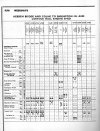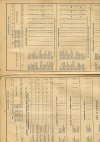I'm hoping someone can help out with this one.
I've found out a little bit more of how freight trains worked my old line:
Before going down a 1 in 40 bank, wagons had to have their brakes put on.
When arriving at Padiham station the train stops at Padiham Up home signal number 2 for the brakes to be released.
What puzzles me is where the train stops to remove the brakes - the wagons themselves would be along side the up platform. I've double checked these facts and these are the instructions in the sectional appendix (1960).
What can you tell me about say a typical 16 ton mineral wagon?
More importantly did they have the brake handle (I presume a handle?) on both sides for instance?
And wouldn't it be awkward to release the brakes while the platform is in the way of one side of the wagons?
Thanks,
Andy.
I've found out a little bit more of how freight trains worked my old line:
Before going down a 1 in 40 bank, wagons had to have their brakes put on.
When arriving at Padiham station the train stops at Padiham Up home signal number 2 for the brakes to be released.
What puzzles me is where the train stops to remove the brakes - the wagons themselves would be along side the up platform. I've double checked these facts and these are the instructions in the sectional appendix (1960).
What can you tell me about say a typical 16 ton mineral wagon?
More importantly did they have the brake handle (I presume a handle?) on both sides for instance?
And wouldn't it be awkward to release the brakes while the platform is in the way of one side of the wagons?
Thanks,
Andy.
Last edited:




